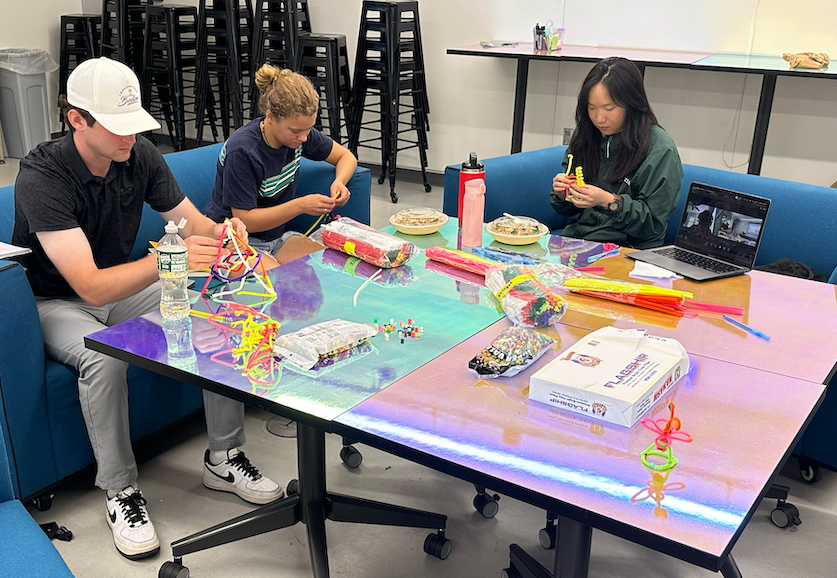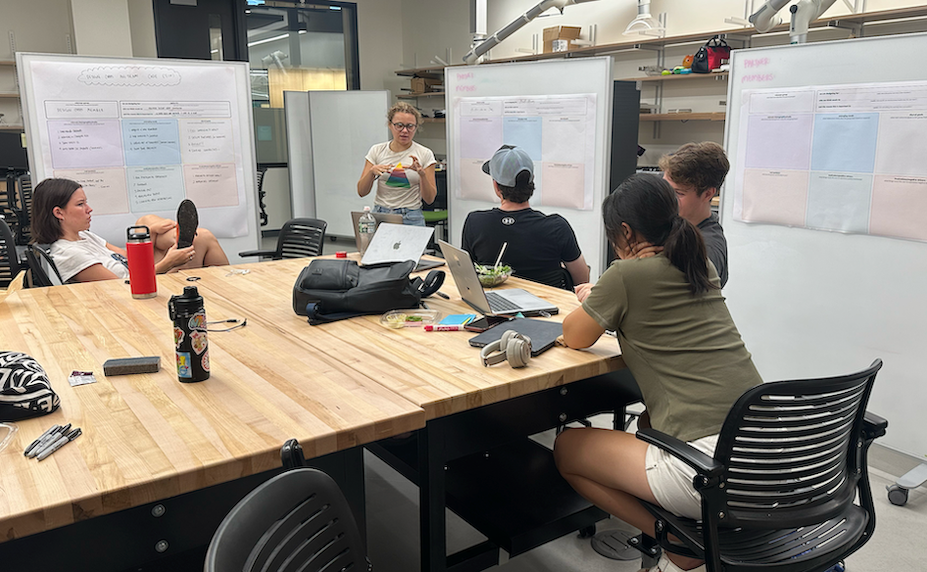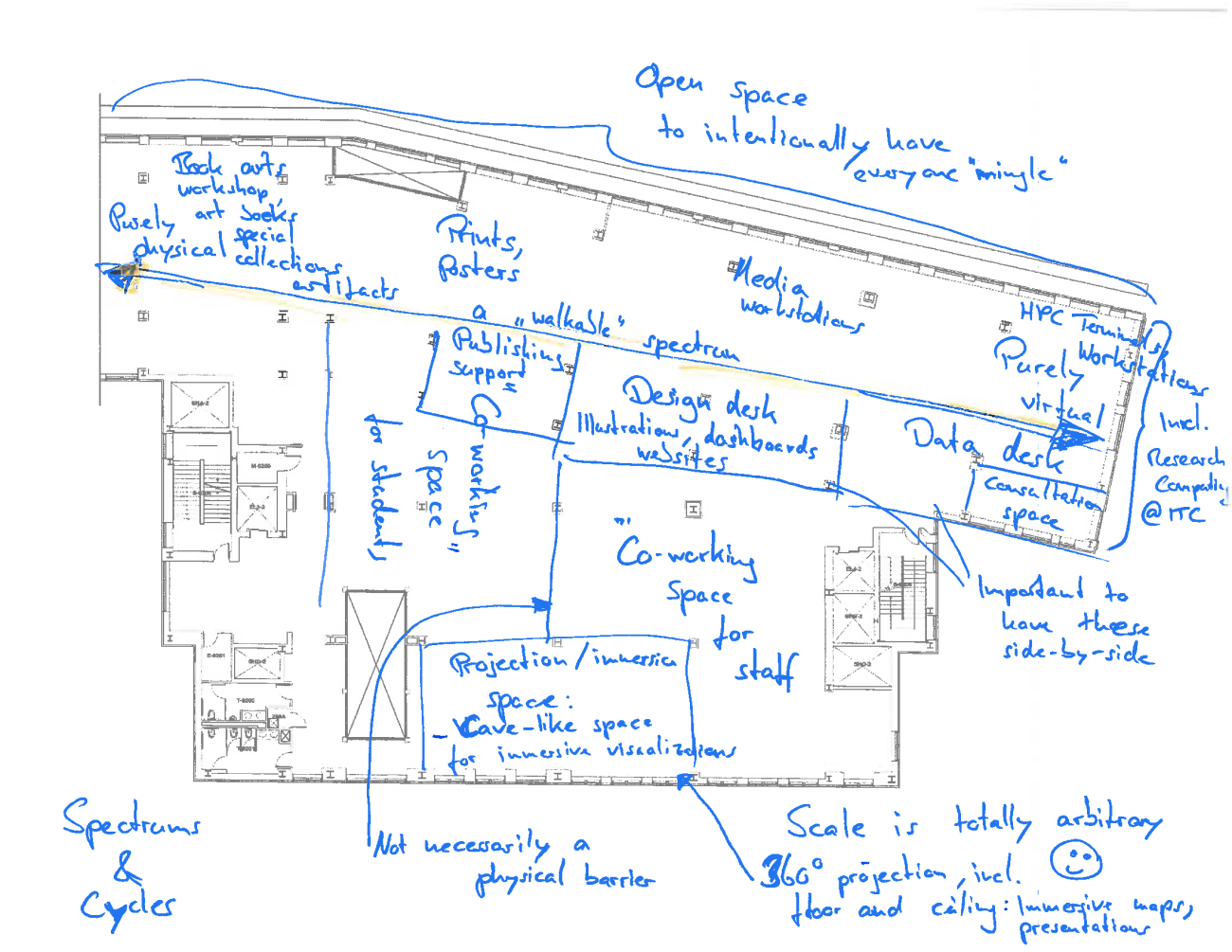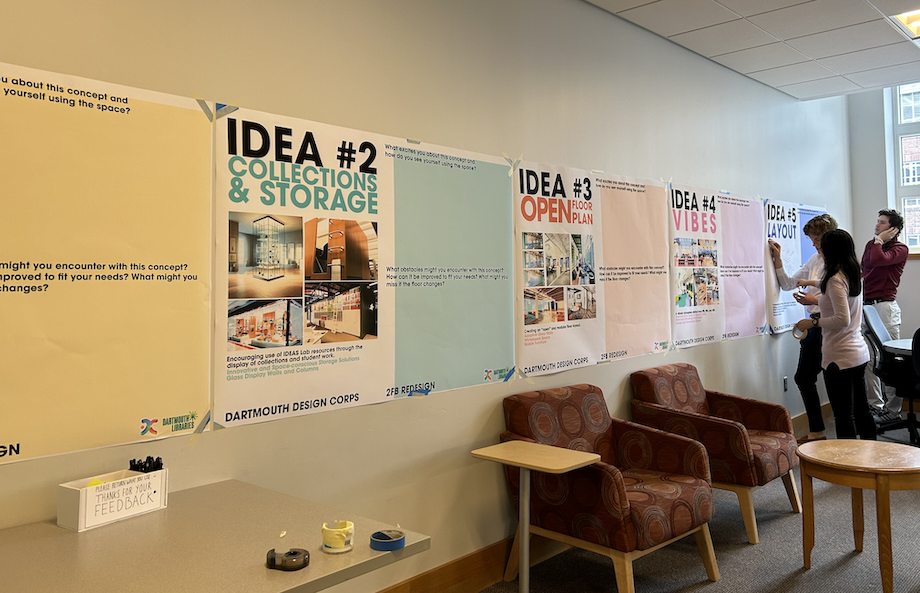Different industries and sectors take distinct approaches to theorizing and applying their versions of design thinking. However, core to them all, is the fundamental nature of design as a human capacity. And it is that perspective that the Libraries wanted to tap into as part of a plan to re-envision the second floor of the Berry Library.
"For as long as humans have existed, we’ve always been makers. That means you’re a designer too!" - Paula Olson, DIAD Senior Program Manager
At Dartmouth, we're fortunate to have the Design Initiative at Dartmouth (DIAD), housed at Thayer, serving all corners of campus and beyond. DIAD spearheads interdisciplinary research efforts, off-campus projects, new courses and collaborative programs using human-centered design and design thinking. The DIAD team facilitates collaborative creativity using context responsive frameworks and activities to bring together technology and the liberal arts. This approach empowers the community to uncover and address the most challenging problems. It’s also the origin of the intensive program, Design Corps. The result? A collection of interwoven, distinct student-led group projects engages with various campus collaborators to empathize, define, and prototype innovative transformations.
The Design Corps program brings together teams of students and Dartmouth-wide partners to confront complex challenges, working over the course of one to three terms. Rooted in the spirit of collaboration and experiential learning, the program invites students to immerse themselves in human-centered design, activating their creative curiosity to understand user experiences and propose opportunities based on real needs.
In 2023, Susanne Mehrer, Dean of Libraries, connected with DIAD co-directors Solomon Diamond and Eugene Korsunskiy. She was excited to explore how a partnership with DIAD and Design Corps could include student voices through user-centered design to help conceptualize the future spaces and services on second floor Berry Library (2FB). With the partnership in place, Laura Braunstein, Head of Digital Scholarly Engagement at Dartmouth Libraries, led this collaborative initiative with library staff, the Design Corps' students, and other key stakeholders throughout. Laura shared how the Design Corps students’ participation in and contribution to this project was incredibly important. She said that one challenge and opportunity for the Design Corps team was getting stakeholders on the same page as far as project vision and user needs. She also emphasized how the team's "collaboration with the Libraries will be the basis for everything else we do.”



